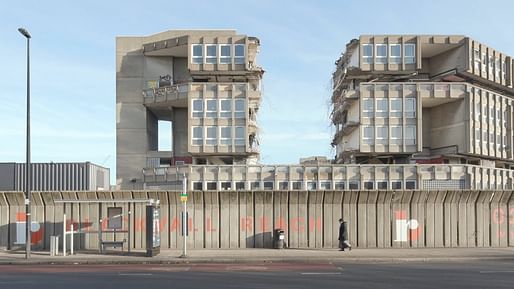
Though buildings are often symbols of permanence, as it may lend itself to the status of an icon for a city or an heirloom for a family, they can be rendered obsolete at any moment. According to Ruin and Redemption in Architecture, Dan Barasch's newest book published by Phaidon Books, abandoned buildings can either be Lost, Forgotten, Reimagined or Transformed.
1. Lost

"The Brutalist Robin Hood Houses in London featured innovative design elements including "streets in the sky," internal elevated passageways and alcoves that were intended to encourage social interaction and give shared amenity to residents.
After a period of decline and despite considerable attempts at preservation, demolition of the 252 apartments began in 2017. A new 1,575-unit housing development is now partly complete on the site, and a museum is planned to commemorate the original design."
2. Forgotten
"The British built an eerie series of structures known as the Maunsell Sea Forts in the Thames Estuary to protect London during WWII. These three clusters of seven fortified buildings rose from the sea on stilts and were connected by an intricate network of catwalks, but were abandoned after the war.
While one of the sea forts was destroyed, others have been temporarily repurposed, and two sea forts remain today, standing like sentinels up to their knees in water. There have been multiple proposals for the creative reuse of these fascinating structures; so far they remain in a rusty, dreamlike derelict state."
3. Reimagined
"While visitors to Los Angeles may never notice it, a long river runs through the sprawling city - and, indeed, led to its development... After suffering a disastrous flood, killing over a hundred people in 1938, the city of Los Angeles enlisted the U.S. Army Corps of Engineers to pave the river entirely with concrete, leaving behind a barren, bleak storm drain.
Although not a landscape designer, Gehry was an LA resident interested in the long term viability of the city; he agreed to collaborate in order to reconsider water issues, sustainability and local resilience. Bringing in landscape practice OLIN and engineering firm Geosyntec, the group developed prelimarity plans and 3-D models to reopen the riverbanks to public use, while reimagining and reusing the existing concrete infrastructure."
4. Transformed
"On the outskirts of Barcelona a giant cement factory was constructed during the first phase of WWI-era industrialization in Catalonia. The facility comprised over 30 silos, two and a half miles of underground tunnels and huge engine rooms - all of which lay in partial states of ruin after its abandonment.
As a young architect in 1973, Ricardo Bofill fell in love with the factory. Attracted by the contradictory elements of the space he decided to retain the factory and modify the stark aspects and aesthetic disjuncture of the building, assigning new functions to its industrial forms... Today Bofill works and lives in a 5,382 square foot portion of La Fábrica, and has claimed that here his personal and professional lives blend seamlessly."
No Comments
Block this user
Are you sure you want to block this user and hide all related comments throughout the site?
Archinect
This is your first comment on Archinect. Your comment will be visible once approved.